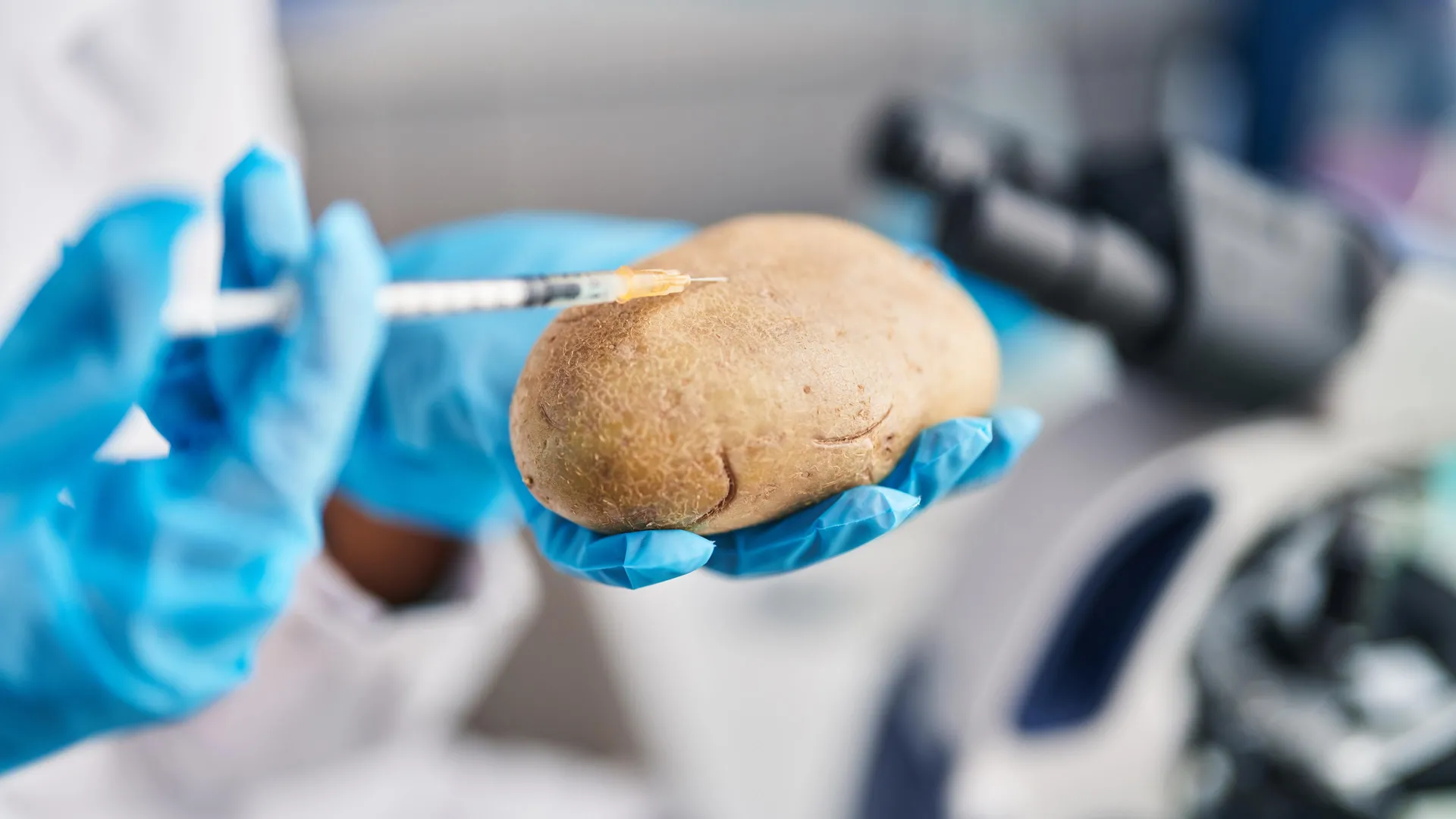Scientists just solved the 9-million-year mystery of where potatoes came from
- Date:
- August 1, 2025
- Source:
- Cell Press
- Summary:
- About 9 million years ago, a wild interspecies fling between tomato-like plants and potato relatives in South America gave rise to one of the world’s most important crops: the potato. Scientists have now traced its roots to a rare natural hybridization that created the tuber, a storage organ that allowed the plant to survive harsh Andean environments and spread rapidly.
- Share:

An international research team has uncovered that natural interbreeding in the wild between tomato plants and potato-like species from South America about 9 million years ago gave rise to the modern-day potato.
In a study publishing in the Cell Press journal Cell, researchers suggest this ancient evolutionary event triggered the formation of the tuber, the enlarged underground structure that stores nutrients found in plants like potatoes, yams, and taros.
"Our findings show how a hybridization event between species can spark the evolution of new traits, allowing even more species to emerge," says corresponding author Sanwen Huang of the Chinese Academy of Agricultural Sciences, China. "We've finally solved the mystery of where potatoes came from."
As one of the world's most important crops, the potato's origin had long puzzled scientists. In appearance, modern potato plants are almost identical to three potato-like species from Chile called Etuberosum. But these plants do not carry tubers. Based on phylogenetic analysis, potato plants are more closely related to tomatoes.
To solve this contradiction, the research team analyzed 450 genomes from cultivated potatoes and 56 of the wild potato species.
"Wild potatoes are very difficult to sample, so this dataset represents the most comprehensive collection of wild potato genomic data ever analyzed," says the paper's first author Zhiyang Zhang of the Agricultural Genomics Institute at Shenzhen, Chinese Academy of Agricultural Sciences.
They found that every potato species contained a stable, balanced mix of genetic material from both Etuberosum and tomato plants, suggesting that potatoes originated from an ancient hybridization between the two.
While Etuberosum and tomatoes are distinct species, they shared a common ancestor about 14 million years ago. Even after diverging for about 5 million years, they were able to interbreed and gave rise to the earliest potato plants with tubers around 9 million years ago.
The team also traced the origins of the potato's key tuber-forming genes, which are a combination of genetic material from each parent. They found the SP6A gene, which acts like a master switch that tells the plant when to start making tubers, came from the tomato side of the family. Another important gene called IT1, which helps control growth of the underground stems that form tubers, came from the Etuberosum side. Without either piece, the hybrid offspring would be incapable of producing tubers.
This evolutionary innovation coincided with the rapid uplift of the Andes mountains, a period when new ecological environments were emerging. With a tuber to store nutrients underground, early potatoes were able to quickly adapt to the changing environment, surviving harsh weather in the mountains.
Tubers also allow potato plants to reproduce without seeds or pollination. They grow new plants by simply sprouting from buds on the tuber. This trait allowed them to rapidly expand and fill diverse ecological niches from mild grasslands to high and cold alpine meadows in Central and South America.
"Evolving a tuber gave potatoes a huge advantage in harsh environments, fueling an explosion of new species and contributing to the rich diversity of potatoes we see and rely on today," Huang said.
Story Source:
Materials provided by Cell Press. Note: Content may be edited for style and length.
Journal Reference:
- Zhiyang Zhang, Pingxian Zhang, Yiyuan Ding, Zefu Wang, Zhaoxu Ma, Edeline Gagnon, Yuxin Jia, Lin Cheng, Zhigui Bao, Zinan Liu, Yaoyao Wu, Yong Hu, Qun Lian, Weichao Lin, Nan Wang, Keyi Ye, Hongru Wang, Jinzhe Zhang, Yongfeng Zhou, Liang Liu, Suhua Li, William J. Lucas, Tiina Särkinen, Sandra Knapp, Loren H. Rieseberg, Jianquan Liu, Sanwen Huang. Ancient hybridization underlies tuberization and radiation of the potato lineage. Cell, 2025; DOI: 10.1016/j.cell.2025.06.034
Cite This Page: